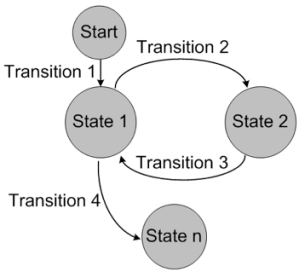Why the Universe Only Needs One Electron
January 8, 2018 3 Comments
According to renowned physicist Richard Feynman (recounted during his 1965 Nobel lecture)…
“I received a telephone call one day at the graduate college at Princeton from Professor Wheeler, in which he said, ‘Feynman, I know why all electrons have the same charge and the same mass.’ ‘Why?’ ‘Because, they are all the same electron!’”
John Wheeler’s idea was that this single electron moves through spacetime in a continuous world line like a big knot, while our observation of many identical but separate electrons is just an illusion because we only see a “slice” through that knot. Feynman was quick to point out a flaw in the idea; namely that if this was the case we should see as many positrons (electrons moving backward in time) as electrons, which we don’t.
But Wheeler, also known for his now accepted concepts like wormholes, quantum foam, and “it from bit”, may have been right on the money with this seemingly outlanish idea.
As I have amassed a tremendous set of evidence that our reality is digital and programmatic (some of which you can find here as well as many other blog posts), I will assume that to be the case and proceed from that assumption.
Next, we need to invoke the concept of a Finite State Machine (FSM), which is simply a computational system that is identified by a finite set of states whereby the rules that determine the next state are a function of the current state and one or more input events. The FSM may also generate a number of “outputs” which are also logical functions of the current state.
The following is an abstract example of a finite state machine:

A computational system, like that laptop on your desk that the cat sits on, is by itself a finite state machine. Each clock cycle gives the system a chance to compute a new state, which is defined by a logical combination of the current state and all of the input changes. A video game, a flight simulator, and a trading system all work the same way. The state changes in a typical laptop about 4 billion times per second. It may actually take many of these 250 picosecond clock cycles to result in an observable difference in the output of the program, such as the movement of your avatar on the screen. Within the big complex laptop finite state machines are many others running, such as each of those dozens or hundreds of processes that you see running when you click on your “activity monitor.” And within each of those FSMs are many others, such as the method (or “sub program”) that is invoked when it is necessary to generate the appearance of a new object on the screen.
There is also a concept in computer science called an “instance.” It is similar to the idea of a template. As an analogy, consider the automobile. Every Honda that rolls off the assembly line is different, even if it is the same model with the same color and same set of options. The reason it is different from another with the exact same specifications is that there are microscopic differences in every part that goes into each car. In fact, there are differences in the way that every part is connected between two cars of equal specifications. However, imagine if every car were exactly the same, down to the molecule, atom, particle, string, or what have you. Then we could say that each car is an instance of its template.
This would also be the case in a computer-based virtual reality. Every similar car generated in the computer program is an instance of the computer model of that car, which, by the way, is a finite state machine. Each instance can be given different attributes, however, such as color, loudness, or power. In some cases, such as a virtual racing game where the idea of a car is central to the game, each car may be rather unique in the way that it behaves, or responds to the inputs from the controller, so there may be many different FSMs for these different types of cars. However, for any program, there will be FSMs that are so fundamental that there only needs to be one of that type of object; for example, a leaf.
In our programmatic reality (what I like to call the Reality Learning Lab, or RLL), there are also FSMs that are so fundamental that there only needs to be one FSM for that type of object. And every object of that type is merely an instance of that FSM. Such as an electron.
An electron is fundamental. It is a perfect example of an object that should be modeled by a finite state machine. There is no reason for any two electrons to have different rules of behavior. They may have different starting conditions and different influences throughout their lifetime, but they would react to those conditions and influences with exactly the same rules. Digital Consciousness Theory provides the perfect explanation for this. Electrons are simply instances of the electron finite state machine. There is only one FSM for the electron, just as Wheeler suspected. But there are many instances of it. Each RLL clock cycle will result in the update of the state of each electron instance in our apparent physical reality.
So, in a very real sense, Wheeler was right. There is no need for anything other than the single electron FSM. All of the electrons that we experience are just instances and follow exactly the same rules. Anything else would be inefficient, and ATTI is the ultimate in efficiency.